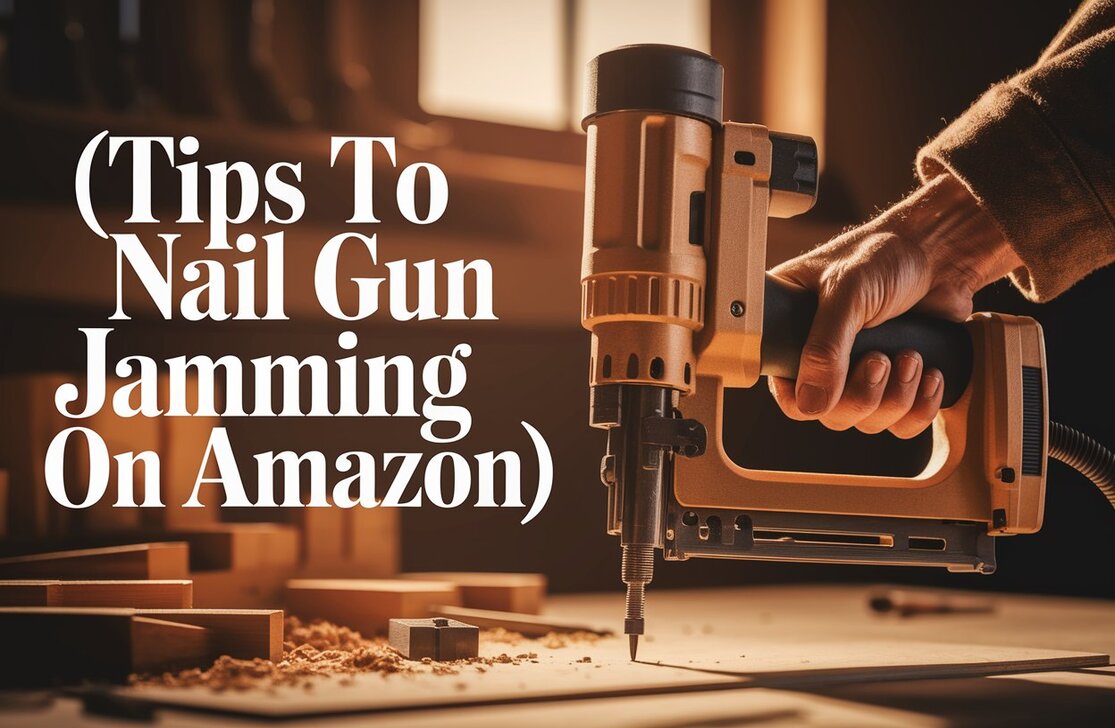Quick Summary: For framing, pneumatic nailers offer superior power and consistent firing, ideal for heavy-duty work. Cordless nailers provide excellent portability and convenience, making them a strong choice for smaller projects or when power source is limited. The best choice depends on your project’s scale and your priorities.
Hey everyone, Jack Shaffer here from Nailerguy! Building something awesome? Maybe a new deck, a backyard fort, or even a small shed? You’ve probably looked at nail guns and wondered, “Which one do I need?” It’s a super common question, especially when you’re just starting out. The two big players you’ll see are pneumatic and cordless nailers. It can feel a little overwhelming with all the talk about PSI, batteries, and fuel cells. Don’t worry, though! We’re cutting through the noise today to help you make the best decision for your framing projects. We’ll break down exactly what makes each type tick, so you can pick the right nailer and get to building with confidence!
Table of Contents
Pneumatic vs. Cordless Nailer: The Framing Showdown
Choosing the right nailer for framing is a big deal. It’s not just about making things stick together; it’s about speed, power, and getting the job done safely and efficiently. When we talk about framing, we usually mean building the structural skeleton of a house or other construction. This involves driving lots of nails into strong pieces of wood, often repeatedly. So, the tool needs to be up to the task. Let’s dive into the two main contenders: pneumatic and cordless nailers. Understanding their differences is key to picking the one that will make your next framing project a success.
What is a Pneumatic Nailer?
Think of a pneumatic nailer as the classic workhorse. It runs on compressed air, which is supplied by an air compressor. This setup usually involves a long hose connecting the nailer to the compressor. The air pressure from the compressor is what powers the nail into the wood. These tools have been around construction sites for ages, and for good reason. They are known for their reliability and serious driving power.
How Pneumatic Nailers Work
It’s pretty straightforward, really. When you pull the trigger on a pneumatic nailer, a valve opens, and compressed air rushes into a cylinder. This pushes a piston down with incredible force. This piston then strikes the head of the nail, driving it deep into the wood. When you release the trigger, a spring mechanism or another burst of air resets the piston, ready for the next nail. The “PSI” (pounds per square inch) of air pressure delivered by your compressor is crucial; it determines the driving power of the nailer.
For a great overview of how air compressors work and their importance in powering pneumatic tools, you can check out resources from the U.S. Department of Energy. They have some fantastic information on industrial applications that directly relates to the power behind your tools.
What is a Cordless Nailer?
Cordless nailers are the modern marvels. They’re powered by rechargeable batteries, which means no hoses and no air compressors. This freedom from tethers is their biggest selling point. They still use a mechanism to drive nails, but instead of compressed air, they typically use a combination of a battery, a motor, and sometimes a small gas canister or a spring system to provide the driving force. This makes them incredibly convenient, especially when you need to move around a lot or work in tight spaces.
How Cordless Nailers Work
There are a few types of cordless nailers, but the most common for framing are either;
- Battery-powered (or Electro-pneumatic): These nailers have a motor that pressurizes a small internal air cylinder. When you pull the trigger, the battery powers this motor to drive the piston. They offer good power and feel somewhat like pneumatic nailers.
- Fuel-cell powered (or Gas + Battery): These use a small, disposable propane-like fuel cell that, when punctured by the battery pack, releases a small amount of gas. A spark ignites this gas, creating a mini-explosion that drives the nail. They deliver significant power but require ongoing fuel cell purchases.
The battery provides the power for the motor that drives the nail, either directly or by pressurizing an internal air system. This convenience comes with the trade-off of battery life and, in some cases, the cost of fuel cells.
Key Differences: Pneumatic vs. Cordless for Framing
When we stack pneumatic and cordless nailers head-to-head for framing, several key differences come to light. These distinctions really highlight where each type shines and where it might fall short for your specific framing needs.
Power and Driving Depth
Pneumatic nailers generally have the edge when it comes to raw power. The continuous supply of high-pressure air means they can drive larger nails deeper into tough hardwoods without skipping a beat. This consistent power is essential for framing, where you need nails to be set securely and uniformly.
Cordless nailers have improved dramatically, but they can sometimes struggle with consistently driving nails to the same depth in very dense lumber, especially if the battery is low or the fuel cell is nearing empty. For framing, where structural integrity is paramount, this consistent depth is a critical consideration. However, high-end cordless framing nailers are now very capable and can often match pneumatic performance on many common framing lumber types.
Speed and Firing Rate
In terms of sheer speed, pneumatic nailers often win. Because they don’t have to wait for a battery to recharge or a fuel cell to ignite, they can often fire nails more rapidly. This is a huge advantage on large framing jobs where every second counts. You can just keep firing as long as you have nails and air.
Cordless nailers are fast, don’t get me wrong, but there might be a slight delay between firing the first nail and being ready for the second, especially with some battery-powered models not using an internal air tank. This “charge-up” time, though often fractions of a second, can add up on a long day.
Portability and Convenience
This is where cordless nailers truly dominate. The lack of an air hose and compressor means you have unparalleled freedom of movement. You can easily move around a job site, get into tight corners without dragging a hose, and set up much faster. If you’re working alone, on a roof, or in numerous small areas, the portability of a cordless nailer is a game-changer.
Pneumatic nailers, while powerful, require an air compressor and hose. This setup can be bulky and cumbersome. Moving the compressor, managing the hose, and ensuring you have an outlet or long extension cord can slow down your workflow and limit where you can work. However, if you’re already at a shop with a dedicated compressor, or if the job site is small and contained, the hose might not be a major issue.
Cost and Maintenance
Initially, a pneumatic framing nailer itself might be cheaper than a high-quality cordless model. However, you also need to factor in the cost of an air compressor, air hose, and possibly air fittings. Compressors can range from a few hundred dollars for basic models to over a thousand for larger, more robust units. Maintaining a compressor (checking oil, draining water) also adds to the upkeep.
Cordless nailers have a higher upfront cost for the tool itself, including the battery and charger. If you opt for fuel-cell models, you’ll have ongoing costs for the fuel cells and potentially replacement ignition elements. However, the elimination of a compressor and hose can simplify your initial purchase and reduce some maintenance tasks, freeing you from dealing with air leaks or compressor issues.
Noise Level
Pneumatic nailers tend to be quite loud due to the rapid release of compressed air with each shot. Cordless pneumatic (battery-powered) nailers are often quieter, as the air isn’t escaping at such high speeds constantly. Fuel-cell cordless nailers can also be quite loud, sometimes even louder than pneumatics, due to the combustion process. Ear protection is essential for all types of nailers, but it’s something to consider if noise is a major factor for you or your neighbors.
Tool Weight
When you add up the weight of a pneumatic nailer, hose, and compressor, it’s significantly more than a cordless nailer alone. However, the nailer itself might be lighter than some cordless models, as the battery and motor add bulk. For extended use or working overhead, the overall weight and balance of the tool are important. Many users find that while the nailer itself might be a bit heavier, the freedom from the hose makes the pneumatic setup feel less cumbersome for long days of repetitive nailing.
Pros and Cons of Each Type for Framing
To make things even clearer, let’s lay out the advantages and disadvantages of each type specifically for framing larger projects.
Pneumatic Nailer: Pros and Cons
Pros:
- Consistent Power: Delivers strong, consistent nailing depth regardless of battery charge or fuel levels.
- High Firing Speed: Can fire nails very rapidly, ideal for quick framing.
- Lighter Tool Weight: The nailer itself is often lighter than its cordless counterparts.
- Lower Initial Tool Cost: The nailer unit is typically less expensive than a comparable cordless model.
- Reliable Performance: Proven technology with a long track record of durability.
Cons:
- Requires Air Compressor: An additional, bulky, and expensive piece of equipment is needed.
- Hose Tethers: The air hose limits mobility and can be a tripping hazard.
- Setup Time: Connecting hoses and waiting for the compressor to build pressure takes time.
- Noise: Can be very loud, requiring good hearing protection.
- Power Source Limitation: Need access to an electrical outlet for the compressor, or a very large portable compressor.
Cordless Nailer: Pros and Cons
Pros:
- Ultimate Portability: No hoses or compressors mean total freedom of movement.
- Fast Setup: Grab and go functionality.
- Convenience: Excellent for tight spaces, roofs, or working alone.
- Quieter Operation (often): Battery-powered models are typically less noisy than pneumatics.
- Versatility: Great for various job sites and quick touch-ups.
Cons:
- Higher Initial Tool Cost: The tool, battery, and charger are more expensive upfront.
- Battery Limitations: Requires fully charged batteries; performance can drop as battery drains.
- Fuel Cell Costs: Fuel cell models have ongoing consumable costs.
- Power Consistency (potential issue): May struggle with very hard woods or deep nails compared to high-power pneumatics.
- Tool Weight: The nailer itself can be heavier due to the battery and motor.
When to Choose Which: Proven Framing Scenarios
The “best” choice isn’t always about which tool is technically superior, but which tool is superior for your specific situation. Here are some scenarios to help you decide.
Choose a Pneumatic Nailer If:
- You’re building a large structure: For extensive framing like a full house, a garage, or a large deck, the consistent power and speed of a pneumatic nailer will save you time and ensure quality.
- You have a dedicated workspace: If you have a workshop or garage with an air compressor already set up, leveraging it for framing is economical and efficient.
- Tough lumber is your norm: If you frequently work with dense hardwoods or need to drive nails exceptionally deep for structural reasons, a pneumatic nailer offers the most reliable power.
- Budget is tight for the “system”: If you can find a good deal on a compressor and hose setup, or already own one, the nailer itself might be more affordable than a top-tier cordless.
- You’re part of a crew: Pneumatic tools are the standard on most professional job sites for a reason – their speed and power for high-volume work.
Choose a Cordless Nailer If:
- You’re tackling smaller projects: A backyard shed, a garden planter box, a chicken coop, or repairs around the house are perfect for cordless convenience.
- Portability is your top priority: You need to move around a lot, work on a steep roof, or in tight, awkward spaces where a hose would be a major hindrance.
- You value quick setup and teardown: If you have limited time and want to start nailing almost instantly without fussing with compressors and hoses.
- You’re working alone: Managing an air compressor and hose by yourself can be a challenge. A cordless nailer simplifies the process immensely.
- You want to minimize noise: For projects in residential areas where noise might be a concern, a battery-powered cordless will likely be the quieter option.
Essential Accessories for Framing Nailers
No matter which type of nailer you choose, there are a few accessories that will make your framing job go smoother and safer.
For Pneumatic Nailers:
- Air Compressor: Ensure it has enough CFM (Cubic Feet per Minute) output to keep up with your nailer.
- Air Hose: A good quality, durable hose that’s long enough for your needs but not excessively so.
- Air Fittings: Quick-connect couplers make attaching and detaching the hose a breeze.
- Air Regulator: To control the air pressure going to the nailer, ensuring optimal and safe operation.
- Safety Glasses or Goggles: Non-negotiable for eye protection.
- Hearing Protection: Earplugs or earmuffs are essential.
- Work Gloves: Protect your hands.
For Cordless Nailers:
- Extra Batteries: Keep a charged spare on hand so you never have downtime.
- Fast Charger: If your batteries drain quickly, a fast charger can be a lifesaver.
- Fuel Cells (if applicable): Stock up so you don’t run out mid-project.
- Safety Glasses or Goggles: Absolutely critical for protecting your eyes.
- Hearing Protection: Still very important, especially for fuel-cell models.
- Work Gloves: For hand protection.
Safety First: Using Your Framing Nailer
Nailers are powerful tools, and safety should always be your top priority. Here are some fundamental safety tips:
- Read the Manual: Every tool is different. Familiarize yourself with your specific nailer’s operation and safety features.
- Wear Safety Gear: Always wear safety glasses or goggles. Hearing protection is also a must.
- Never Point the Nailer at Anyone: This might seem obvious, but it’s incredibly important. Accidental discharge can cause serious injury.
- Keep Fingers Away from the Trigger: Do not place your finger on the trigger unless you intend to fire a nail.
- Ensure Depth Adjustment is Set Appropriately: Too deep can damage wood, too shallow means the nail isn’t set properly.
- “Nailer Safety” and Depth-of-Drive: For framing, you want a consistent depth. Some nailers have adjustable depth settings. Ensure it’s set so the nail head is flush or slightly countersunk, but not so deep that it breaks the wood surface unless intended. For a guide on nail gun safety regulations in construction, you can refer to the Occupational Safety and Health Administration (OSHA) standards for particular tools and equipment.
- Never Disable Safety Features: Contact-trip mechanisms prevent accidental firing. Do not bypass them.
- Secure Your Workpiece: Make sure the material you are nailing into is stable and won’t move.
- Be Aware of Your Surroundings: Know where other people are, and be mindful of electrical wires or plumbing within walls.
Table: Pneumatic vs. Cordless Framing Nailer Quick Comparison
Here’s a quick summary table to help you visualize the key differences.
| Feature | Pneumatic Nailer | Cordless Nailer |
|---|---|---|
| Power Source | Compressed Air (from compressor) | Rechargeable Battery (sometimes with fuel cell) |
| Portability | Limited (requires hose & compressor) | High (unlimited movement) |
| Setup Time | Moderate (connect hose, build pressure) | Fast (grab and go) |
| Consistent Firing | Excellent | Good to Very Good (can vary with battery/fuel level) |




